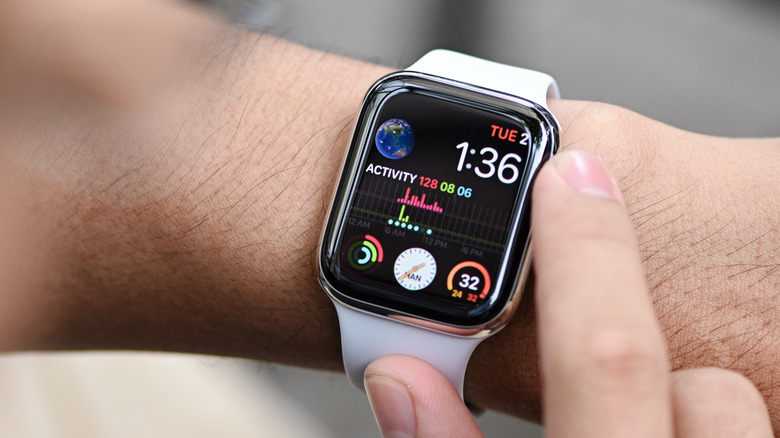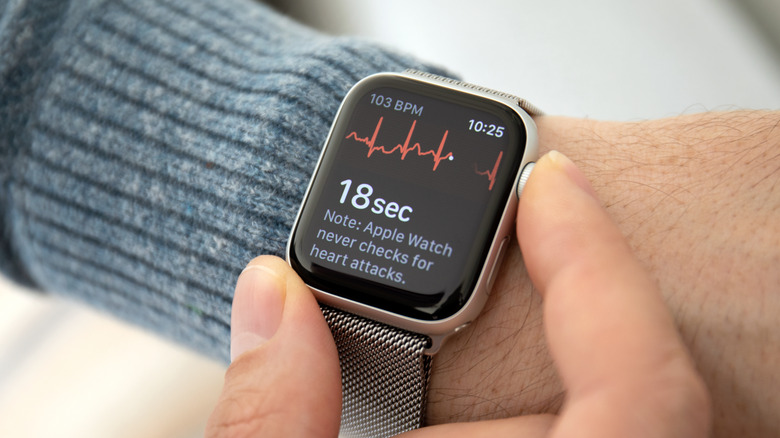Why The Big Apple Watch Feature We've Been Waiting For Is Apparently Delayed Again
One of the most highly-anticipated fitness upgrades destined for the Apple Watch has been pushed back by at least another couple of years. Per a Bloomberg report, Apple has been hit by technical issues with implementing blood pressure sensing on its smartwatch. Citing sources familiar with the latest developments, the report mentions that the blood pressure monitoring system for the Apple Watch won't be ready until 2024 at the earliest. That, in turn, means potential buyers might have to wait until the 2025 Apple Watch hits shelves to be able to get blood pressure-related alerts from their smartwatch.
Apple has reportedly been experimenting with a reworked sensor and software for blood pressure sensing on an Apple Watch, but accuracy has proven to be a far-fetched goal. The company has reportedly been planning the aforementioned feature for the last four years and is currently testing it among employees. However, the feature won't deliver the same results as one gets from a standard blood pressure cuff. According to the report, instead of measuring the systolic and diastolic pressure, the watch will only detect raised blood pressure levels and will accordingly warn users about serious problems such as hypertension. On a related note, Apple also has blood glucose monitoring capability in the pipeline and it might arrive this year.
A meaningful delay
If the watch detects abnormally high blood pressure, it will advise users to rely on a medical-grade blood pressure monitor to take the measurement and visit a doctor to get checked. Apple appears to be taking the safer route here.
There is another benefit of merely sensing high blood pressure and not having to reveal the systolic and diastolic figures. To measure the latter using a commercially available wearable device like the Samsung Galaxy Watch 3, users have to calibrate the readings with a blood pressure monitor every month to get the most accurate results. The tech at the heart of Samsung's smartwatch is pulse wave analysis. Apple apparently aims to avoid the hassle of buying a medical-grade blood pressure monitor and calibrating it every now and then.
The Huawei Watch D, on the other hand, has implemented a neat system of micro-pumps and airbags that can measure blood pressure using the same approach as a typical armband-style blood pressure monitor. It is disappointing that a feature as promising as blood pressure monitoring won't make its way to the Apple Watch for at least the next couple of years, but on the brighter side, it gives Apple an ample amount of time to implement it in the best way possible.

